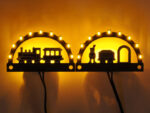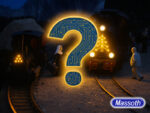You ask us consistently, what is the best back-fitting for a loco.
Remove the existing electronic completely, partial or remain it?
Sadly we can’t give a global answer, while there exists to many versions.
Although we will show you here an overview, which back-fitting type is the right one.
First of all you have to check your available place in your loco.
You don’t need a useful interface, when you are not able to assemble a loudspeaker.
In this case helps only a removing of the old electronic before you make a compromise on the sound.
Important criteria for “remove” or “remain“ are following:
- Place requirement for back-fitting are enough ?
- Reasonable interface available ?
- Connection of light-cable, Pulsed smoke unit, …possible also direct on decoder ?
- Original soundmodule available ?
Here is a common listing of most used LGB electronics.
Locos without digital interface (Year of construction appr. 1968 – 1996)
You should always remove the basic electronic.
In most cases there are used diodes or condensers, who are not digital usable.
The illumination should be easy reconnect to the decoder.
Locos without digital interface with sound (Year of construction appr. 1974 – 1996)
You should also always remove the basic electronic.
If the sound has a clock generator on the axis, you can connect the sound direct on track.
Alternative you can switch it with a relais over an F-output.
You should in no case connect it direct on the F-output, while in most cases the peak current is too high.
Sounds without clock generator are not usable in digital mode!
Locos with simple 6pol. interface (Year of construction appr. 1996 – 2004)
Decoder can be connected with enclosed 4 colored gear-cables directly on the 4 or 8 pins. Additionally
you need the 6pol. Interface-cable (Massoth 8150602) for Light and Function.
VERY IMPORTANT : DIP-Switches on LGB-PCB to OFF (If not, your decoder will be damaged)!
If the loco is equipped with sound, it is recommended to make a P-update for faster function triggering.
Locos with direct-decoder interface for 55021 (Year of construction appr. 1998 – to date)
You can easily connect the Massoth eMotion L-Decoder direct on it.
VERY IMPORTANT : DIP-Switches on LGB-PCB to OFF (If existent)!
For assembling of a sound decoder you can soldering directly the cable on the connector.
This is the most used interface, when there was less place in the loco.
Therefore it is useful, to remove the PCB to get more place.
You can find the assignment of the connectors here
Locos with onBoard-decoder (Year of construction appr. 2002 – to date)
If you want to back-fitting a sound, it is useful to remove the decoder.
Two decoders in one loco making often problems on programming.
Alternatively you can back-fitting a pure sound module (e.g. from Champex-Linden).
Locos with 10-pol. DCC-Interface (Year of construction appr. 2004 – to date)
This is a easy to use interface. All important functions are switchable beyond that.
Only remove the analogue bridge and plug the 10 pol. cable (Massoth 8150501) with your decoder.
Locos from other Big Train manufacturers
While we don’t know what technology is used, we can not give common hints for it.
Maybe you can find a proper back-fitting plan for a special loco in our examples.


 Deutsch
Deutsch


